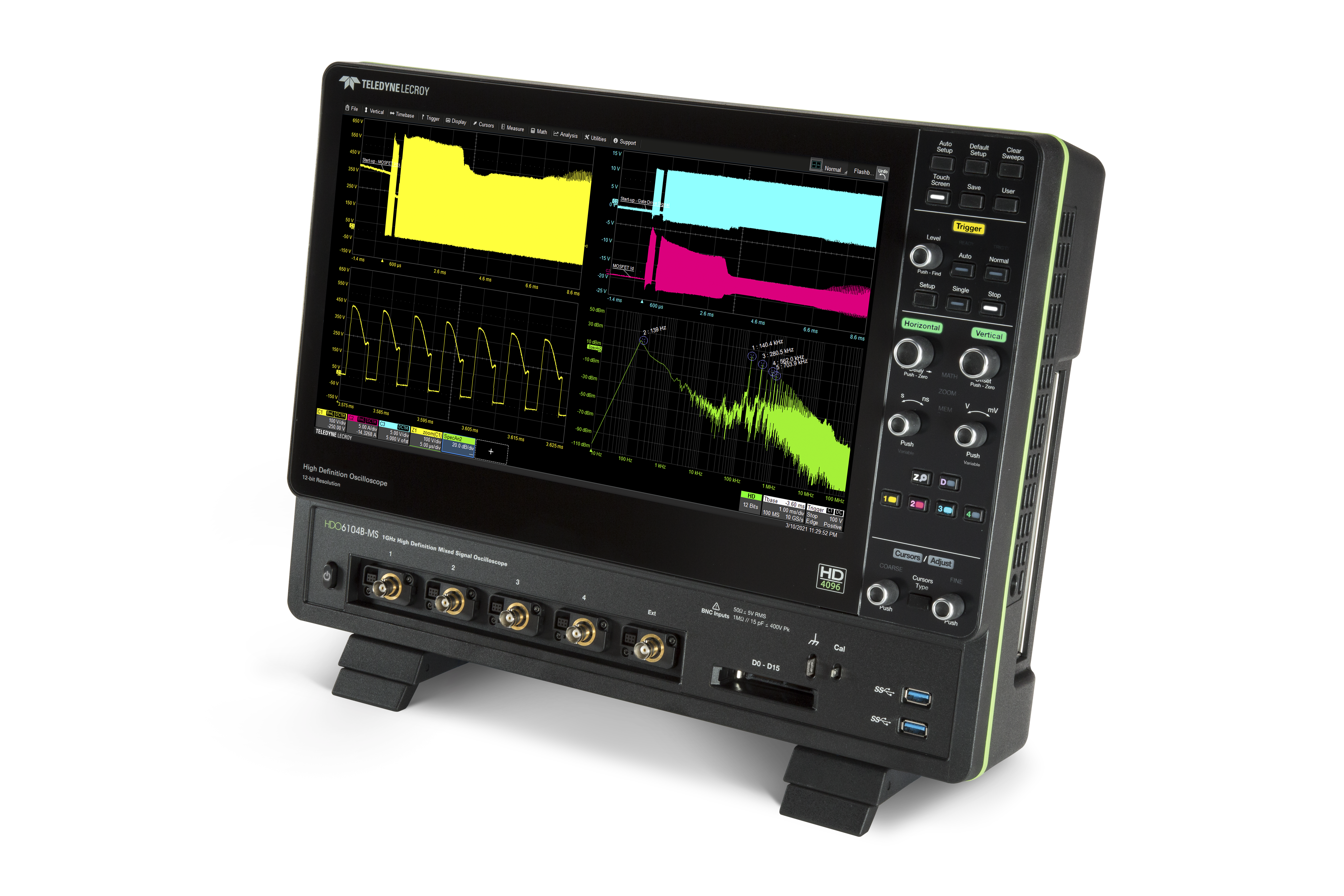Selecting the best oscilloscope requires evaluating several critical factors to ensure it aligns with your testing needs.
1. Bandwidth Requirements
The oscilloscope’s bandwidth determines its ability to accurately capture high-frequency signals. For applications like DDR memory tests, where signal integrity at high speeds is critical, a higher bandwidth oscilloscope is essential. As a rule of thumb, choose an oscilloscope with a bandwidth at least five times higher than the highest frequency component of your signal to ensure accurate representation.
2. Sampling Rate
The sampling rate dictates how frequently the oscilloscope samples the input signal per second. A higher sampling rate provides a more detailed representation of the waveform, which is vital for capturing rapid transient events. For accurate signal reconstruction, select an oscilloscope with a sampling rate at least 10 times the signal’s highest frequency, adhering to the Nyquist theorem.
3. Resolution and Accuracy
Resolution refers to the oscilloscope’s ability to distinguish between small voltage differences. Oscilloscopes with pure 12-bits hardware ADC offer 16 times more precise measurements than traditional 8-bits oscilloscopes. This is particularly important when analysing low-amplitude signals or when signal fidelity is paramount.
4. Memory Depth
Memory depth determines how much data the oscilloscope can store during a single acquisition. A deeper memory allows for longer signal captures at high sampling rates, enabling detailed analysis of complex signals over extended periods. This is especially beneficial when performing DDR memory tests, where capturing long data streams is necessary to assess performance accurately.
5. Number of Channels
The number of channels dictates how many signals can be simultaneously monitored. For comprehensive analysis of multi-signal systems, such as embedded systems or multi-lane serial data streams, oscilloscopes with four or more channels are advantageous. This capability allows for simultaneous observation of multiple test points, facilitating efficient debugging and analysis.
6. Triggering and Decoding Capabilities
Advanced triggering options enable the oscilloscope to isolate specific events within a complex signal, aiding in the identification of anomalies. Decoding capabilities for protocols like I²C, SPI, or UART are invaluable for embedded system development, allowing for real-time analysis of communication buses.
7. Form Factor and Portability
Depending on the application environment, the oscilloscope’s form factor may be a consideration. Benchtop oscilloscopes offer extensive features suitable for laboratory settings, while portable or handheld oscilloscopes are ideal for fieldwork due to their compact size and battery operation.
8. User Interface and Connectivity
An intuitive user interface enhances productivity by simplifying instrument operation. Touchscreen interfaces, customisable displays, and easy access to functions can significantly improve the user experience. Additionally, connectivity options such as USB, LAN, or GPIB facilitate data transfer, remote control, and integration into automated test setups, streamlining workflows.
9. Budget Constraints
While it’s important to select an oscilloscope that meets technical requirements, budget considerations cannot be overlooked. Assess the cost-to-benefit ratio, ensuring that the chosen instrument provides the necessary features without unnecessary expenditures. Entry-level oscilloscopes may suffice for basic applications, whereas advanced models with higher specifications are justified for complex analyses.
By carefully evaluating these factors, professionals can make informed decisions when selecting an oscilloscope, ensuring it meets the demands of their specific applications and contributes to efficient and accurate testing processes.
Using an Oscilloscope for DDR Memory Testing
Performing a DDR memory test requires an oscilloscope with specific capabilities to accurately capture and analyse high-speed signals. Here’s a step-by-step guide:
-
Select an Appropriate Oscilloscope
- Bandwidth: Ensure the oscilloscope’s bandwidth is sufficient to capture the highest frequency components of the DDR signals. Since DDR signals can vary in transfer rates even within the same generation, selecting the appropriate oscilloscope bandwidth for DDR memory testing requires careful consideration.
- Sampling Rate: A higher sampling rate provides better resolution. Aim for a sampling rate at least twice the oscilloscope’s bandwidth.
- Memory Depth: Adequate memory depth allows for capturing longer data records without sacrificing resolution, essential for observing DDR burst patterns.
-
Configure Probing
- Differential Probes: Use high-quality differential probes with minimal loading effect to accurately capture the DDR signals without distorting them.
- Probe Placement: For DDR memory testing, users may opt to use interposers for a cleaner, reusable, and more consistent probing setup. Alternatively, direct soldering onto exposed signal points—such as BGA balls or PCB pads—can be used when interposers are not suitable or available.
-
Set Up the Oscilloscope
- Triggering: Configure the oscilloscope to trigger on specific DDR events, such as read or write commands, to isolate the desired signal segments.
- Time Base and Scale: Adjust the time base and vertical scale to appropriately display the DDR signal characteristics.
- Read / Write separation: At higher DDR speeds, the timing margin for detecting skew between DQ and DQS becomes increasingly narrow due to rapid signal transitions. To ensure accurate identification of read and write bursts, it is recommended to complement the oscilloscope with a high-speed digital analyzer. By capturing the command/address (CA) bus, the analyzer enables precise burst direction decoding, eliminating ambiguity in read/write separation.
-
Perform Signal Integrity Analysis
- Eye Diagrams: Generate eye diagrams to assess the quality of the DDR signals, checking for timing jitter, noise margins, and signal integrity issues.
- Timing Analysis: Measure setup and hold times to ensure they meet DDR specifications.
-
Compliance Testing
- Utilise the oscilloscope’s compliance testing software to automatically verify that the DDR signals adhere to industry standards and specifications.



